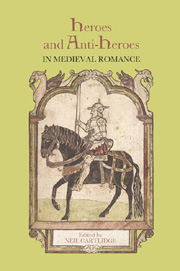Book contents
3 - Hengist
from Part I - Individual Characters
Published online by Cambridge University Press: 05 February 2013
Summary
Hengist's Afterlives
Hengist enters medieval literature as one of its great villains in the ninth-century Historia Brittonum attributed to Nennius, as leader of a people ‘amicialiter locuti, in mente interim vulpicino more agebant’ (‘friendly in their words, but wolfish in heart and deed’). In all versions of his story, he arrives with his brother Horsa and their men on the shores of Britain (sometimes by invitation and sometimes not) and serves as mercenary for the British king Vortigern against his northern enemies. He becomes so indispensable to the unpopular Vortigern that he acquires lands in Britain, after which he steadily widens the sphere of Saxon power and influence until he and his Saxons finally slaughter their British hosts in the infamous ‘Eu, nimet saxas’ (‘take out your knives’) episode, turning the formalities meant to cement a peace treaty between the two peoples into a massacre. Yet by the post-medieval period this villain had become a heroic figure in English literature. A short survey, moving backward in time from the nineteenth century, conveys the sea-change in Hengist's reputation.
John Lesslie Hall's (1856–1928) poem ‘The Calling of Hengist and Horsa’ (1899) participates fully in the nineteenth-century vogue for ‘Germanic Philology’, which came to full flowering in Britain with the establishment of the Philological Society in 1842 and the Early English Text Society in 1864.
- Type
- Chapter
- Information
- Heroes and Anti-Heroes in Medieval Romance , pp. 43 - 58Publisher: Boydell & BrewerPrint publication year: 2012

